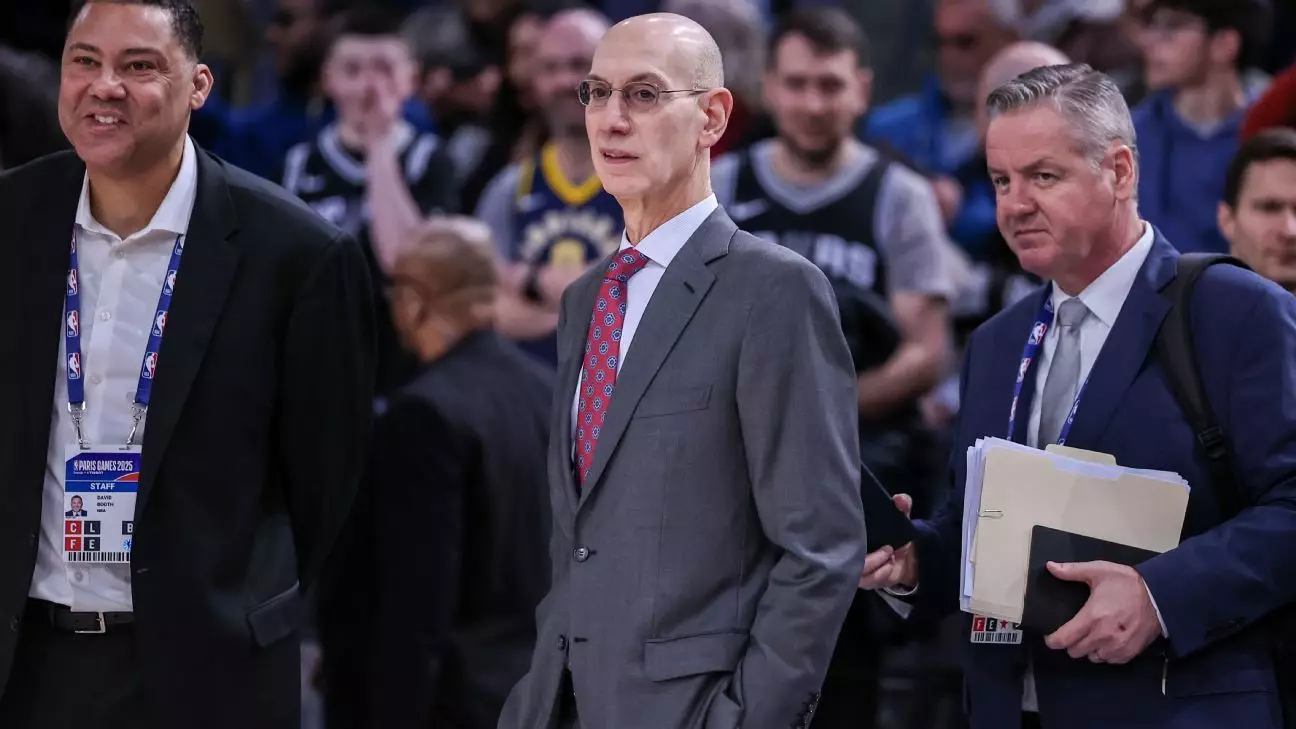The conversation surrounding the structure of NBA games has taken an intriguing turn with the recent comments made by league commissioner Adam Silver. While the sport has maintained its 48-minute game duration for nearly eight decades, Silver’s suggestion to reduce this to 40 minutes by implementing four 10-minute quarters raises several questions about the essence of basketball and the long-term implications of such a change.
Silver made his remarks during an appearance on “The Dan Patrick Show,” acknowledging the growing influence of global basketball dynamics and television formats on the NBA’s structure. The commissioner pointed out that the NBA stands out as the only major basketball league that plays a full 48 minutes, with formats such as college basketball and Olympic games opting for shorter durations. For Silver, adjusting the game length seems to align with modern viewing habits where entertainment is often bracketed into two-hour segments. This aligns the sport more closely with other televised events, creating a smoother transition for audiences accustomed to shorter time frames.
However, one cannot overlook the traditionalists’ perspective, which emphasizes the historical integrity that forms the backbone of the league. NBA games have not only been a showcase of athletic prowess but also a cultural phenomenon that has woven itself into the fabric of its fans’ lives.
Altering the game length would undoubtedly create a domino effect across the league. If games were shortened, many current records—both single-game and single-season—could lose their significance as benchmarks of greatness. Take for instance the lengthy efforts required to break scoring or playing-time records; a downgrade in game length could fundamentally shift these discussions. Elite players, like Mikal Bridges, who leads the league in average minutes played, could find themselves positioned differently in the historical context of the game.
Moreover, shortening the game may inadvertently dilute the roles of peripheral players on the roster. With fewer minutes available, the diminished importance of bench players could lead to revised salary structures, impacting the overall financial dynamics of teams. As players who might not see much game time become less significant, the traditional team roles that contribute to a successful franchise could unavoidably shift.
Prominent coaches like Tom Thibodeau and Michael Malone have voiced resistance to the proposed changes, highlighting their commitment to the historical and traditional aspects of the sport. Thibodeau’s concern focuses on the potential ramifications for record-breaking endeavors, cautioning that a shift away from the 48-minute precedent could compromise the league’s competitive integrity. Similarly, Malone acknowledges the importance of evolving with viewership trends; however, he stresses maintaining a balance to avoid transforming the league into a mere spectacle.
The implications of Silver’s suggestion go beyond mere statistics and reach into the integrity of the sport itself. There is an underlying fear that making changes solely for ratings could lead to a dilution of the sport, symbolized aptly by Malone’s reference to the ringmaster of a circus. Denver’s coach urges that while innovation can be beneficial, there still needs to be a barrier that guards the sport’s historical essence.
This discussion catalyzes a broader conversation about how leagues can adapt without sacrificing their core values. Silver’s inclination to explore new formats reflects pressing societal trends where instant gratification is paramount, particularly with younger audiences.
As the NBA navigates its future—pondering whether to shorten games or perhaps rethink free-throw rules—it must proceed with caution. Addressing modern dynamics and commercial interests is essential for ongoing engagement, yet this modernization should never overshadow the sport’s rich heritage. The challenge lies in striking the right balance between evolution and preservation. Ultimately, the essence of basketball, woven with its historical significance, must remain intact amid any proposed transformations. As discussions continue, the league and its stakeholders must tread thoughtfully into this territory, ensuring that any changes respect the legacy and cultural weight that the NBA carries.

